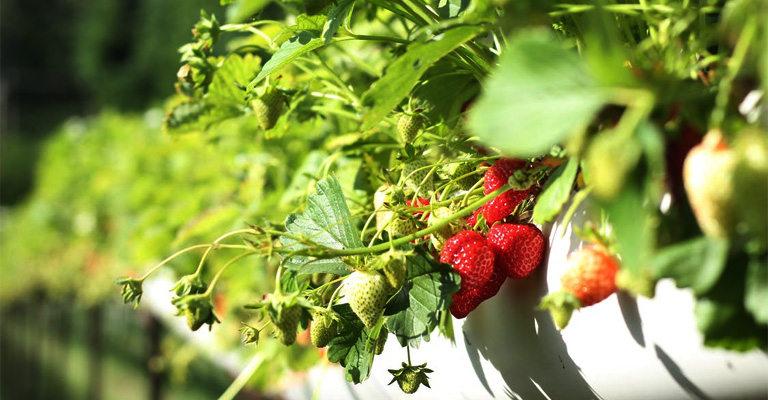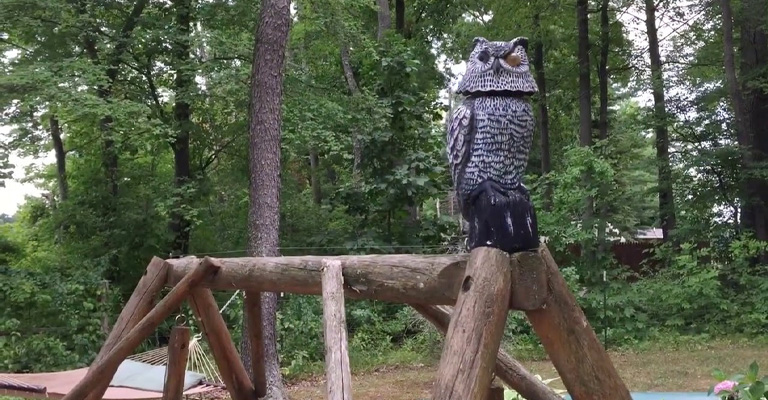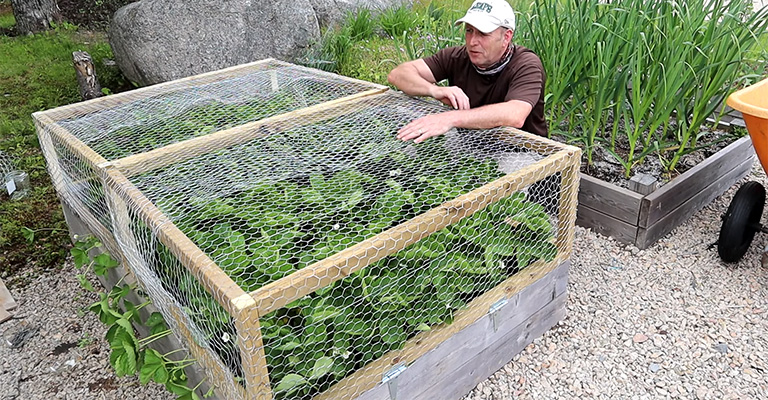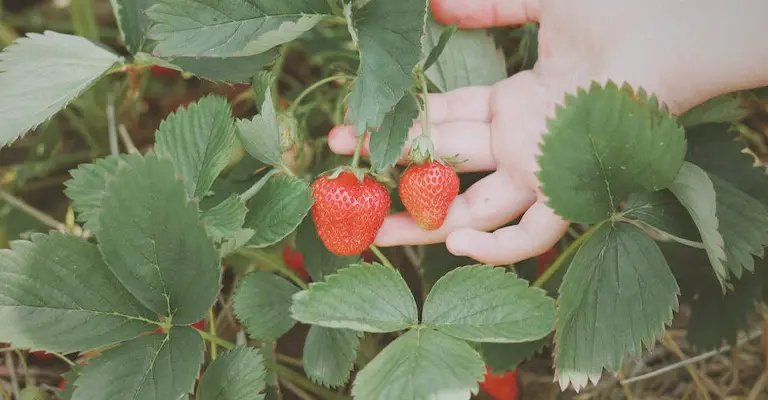Strawberries are a delightful and delicious addition to any garden, but their vibrant red color and sweet taste can make them irresistible to birds.
If you’ve found yourself in a constant battle with feathered thieves, fear not! In this guide, we will explore effective strategies to protect your precious strawberry harvest from the clutches of hungry birds.
From physical barriers to visual deterrents, we will delve into a range of techniques that can help safeguard your strawberries without causing harm to the birds or the environment.
Discover how to protect strawberries from birds by utilizing scare tactics and even creating decoy distractions to keep those pesky birds at bay.
With these tried-and-tested methods, you can enjoy the fruits of your labor and savor the succulent taste of homegrown strawberries, all while ensuring that the birds find their own delectable treats elsewhere.

How to Protect Strawberries from Birds?
Protecting strawberries from birds can be a challenge, but there are several effective methods you can try. Here are some suggestions:
Netting
Cover your strawberry plants with bird netting. This physical barrier prevents birds from reaching the berries while still allowing sunlight and rain to reach the plants. Make sure the netting is securely fastened to prevent birds from getting underneath.
Scare Tactics
Birds can be scared away by visual and auditory deterrents. Hang shiny objects like aluminum foil strips or old CDs near your strawberry plants to create reflections that birds find intimidating.
You can also use scarecrows or owl decoys to deter birds. Additionally, playing recorded bird distress calls or predator sounds can help keep birds away.
Repellents
There are various bird repellents available in the market that can be sprayed on or around your strawberry plants. These repellents emit odors or tastes that birds find unpleasant, deterring them from feeding on the berries. Follow the instructions on the product carefully and reapply as needed.
Companion Planting
Planting certain companion plants near your strawberries can help deter birds. For example, marigolds, sunflowers, or tall grasses can create a visual barrier that makes it harder for birds to access the berries.
Scare Devices
You can use motion-activated scare devices, such as wind chimes, pinwheels, or even a rotating fan, to startle birds when they approach your strawberry patch. The sudden movement and noise can discourage them from landing and feeding.
Harvest Promptly
Harvest your strawberries as soon as they ripen. By removing the ripe berries quickly, you reduce the time available for birds to discover and feast on them.
Visual Deterrents
Hang colorful flags, streamers, or balloons near your strawberry plants. The movement and bright colors can confuse and deter birds from approaching.
Bird Spikes
Install bird spikes on fences, posts, or other structures near your strawberry patch. These spikes make it difficult for birds to land and perch, discouraging them from getting close to the berries.
Reflective Tape
Tie strips of reflective tape or ribbon around your strawberry plants. The sunlight reflecting off the tape creates flashes of light that can startle and deter birds.
Predator Decoys
Place realistic-looking predator decoys, such as plastic snakes or hawks, near your strawberry plants. Birds may mistake them for actual predators and avoid the area.
Physical Barriers
Create a physical barrier around your strawberry plants using chicken wire or mesh cages. Ensure the openings are small enough to prevent birds from accessing the berries.
Repellent Sprays
Some homemade or commercial repellent sprays can be effective in deterring birds. These sprays often contain ingredients like chili pepper, garlic, or vinegar, which birds find unpleasant. Apply the spray to the plants or directly on the berries, following the instructions provided.
Secure the perimeter
Birds may try to access your strawberry patch from neighboring trees or structures. Trim overhanging branches or use bird spikes on nearby structures to prevent birds from gaining easy access.
Provide alternative food sources
Set up bird feeders or birdbaths away from your strawberry plants to divert birds’ attention and provide them with an alternative food source. Remember to combine multiple methods for better effectiveness.
What Are Some Keep Tactics to Scare Away Birds?

While it’s important to deter birds from certain areas, it’s crucial to do so in a humane and ethical manner. Here are some scare tactics that can be used to discourage birds without causing harm:
Visual Deterrents
Hang reflective objects, such as old CDs or aluminum foil strips, near the area you want to protect. The sunlight reflecting off these objects can startle birds and discourage them from approaching.
Scarecrows
Traditional scarecrows can be effective in deterring birds. Place them strategically in the area, making sure to move them occasionally to maintain their effectiveness.
Predator Decoys
Use decoys of natural bird predators, such as owls or hawks, to create the illusion of danger. Birds may avoid areas where they perceive a threat.
Noise Deterrents
Install wind chimes, bells, or other noise-making devices near the area to scare birds away. Alternatively, you can use motion-activated devices that emit loud noises when birds approach.
Bird Repellent Sprays
Some non-toxic bird-repellent sprays are available on the market. These sprays create an unpleasant taste or smell for birds, deterring them from landing or feeding in the treated area.
How Do You Make a Strawberry Cage?

To make a strawberry cage, you’ll need the following materials:
- Wooden or PVC stakes: These will serve as the frame for your cage.
- Chicken wire or hardware cloth: This will form the walls of the cage, keeping birds and other animals out.
- Zip ties or wire: These will be used to secure the chicken wire or hardware cloth to the frame.
- Staple gun or nails: These will be used to attach the chicken wire or hardware cloth to the stakes.
- Wire cutters: These will help you cut the chicken wire or hardware cloth to the desired size.
Step-by-Step Guide
Here’s a step-by-step guide to making a strawberry cage:
Step One
Determine the size and shape of your cage. Consider the area you want to protect and the number of strawberry plants you have.
Step Two
Cut the wooden or PVC stakes to the desired height, ensuring they are tall enough to cover your strawberry plants.
Step Three
Position the stakes around the strawberry plants, creating a rectangular or square shape. Space them evenly and make sure they are firmly planted in the ground.
Step Four
Cut the chicken wire or hardware cloth to match the dimensions of your cage, leaving some extra length to secure it to the stakes.
Step Five
Attach the chicken wire or hardware cloth to the stakes using zip ties or wire. Start at one corner and work your way around, securing the material tightly to prevent any gaps.
Step Six
Use a staple gun or nails to further secure the chicken wire or hardware cloth to the stakes. This will ensure that it stays in place and provides a sturdy barrier.
Step Seven
Check for any gaps or loose areas and make necessary adjustments to ensure the cage is secure. Create an access point by leaving one side of the cage open or adding a hinged door. This will allow you to easily reach the strawberries for harvesting and maintenance.
Common Physical Barriers to Protect Strawberries from Birds

Physical barriers are an effective way to protect strawberries from birds. Here are some common types of physical barriers you can use:
Bird Netting
Bird netting is a lightweight and flexible mesh material that can be draped over strawberry plants.
It creates a physical barrier that prevents birds from reaching the berries while still allowing sunlight and rain to pass through. Secure the netting tightly around the plants to ensure birds cannot get underneath.
Floating Row Covers
Floating row covers are made of lightweight fabric and can be placed directly over strawberry plants. They create a barrier that birds cannot penetrate while still allowing air, sunlight, and water to reach the plants.
Secure the edges of the row covers to the ground to prevent birds from getting underneath.
Cages or Cloches
Build a cage or cloche using wire mesh or chicken wire to enclose the strawberry plants. This creates a physical barrier that birds cannot access.
Ensure the cage or cloche is tall enough to accommodate the height of the plants and secure it firmly to the ground to prevent birds from getting in.
PVC Hoop Tunnels
Create a framework using PVC pipes bent into arches and secured into the ground. Drape bird netting or row covers over the hoops to create a tunnel-like structure that protects the strawberry plants.
This method provides protection from birds while also shielding the plants from extreme weather conditions.
Raised Beds with Covers
Construct raised beds for your strawberry plants and cover them with a frame made of wood or PVC pipes. Attach bird netting or row covers to the frame to create a protective enclosure.
This method not only keeps birds away but also helps with weed control and provides better drainage for the plants.
Remember to secure the barriers tightly and regularly inspect them for any gaps or openings that birds could exploit. Additionally, make sure to remove the barriers during pollination periods to allow bees and other beneficial insects to access the flowers.
FAQs
Using physical barriers like bird netting, floating row covers, cages, or cloches can effectively prevent birds from accessing your strawberries.
Bird netting made of lightweight and flexible mesh material is commonly used to protect strawberries from birds. It allows sunlight and rain to pass through while keeping birds out.
Yes, scare tactics like visual deterrents (reflective objects), scarecrows, predator decoys, noise deterrents, and bird-repellent sprays can be used to discourage birds from approaching strawberry plants.
To make a DIY strawberry cage, you’ll need wooden or PVC stakes, chicken wire or hardware cloth, zip ties or wire, a staple gun or nails, and wire cutters.
Create a frame with the stakes, attach the chicken wire or hardware cloth, and secure it tightly to form a protective cage.
In addition to physical barriers, other alternatives include using bird scare devices like reflective tape or windsocks, employing bird distress calls or predator sounds, or planting bird-repellent plants nearby. However, physical barriers are often the most effective method.
Bottom Line
With the strategies outlined in this guide, you can now confidently protect your strawberries from the persistent appetites of birds.
Remember to choose methods that align with your values and prioritize the well-being of both your crops and the avian visitors to your garden.
By implementing these protective measures, you can enjoy the satisfaction of nurturing your strawberry plants to their full potential and relish in the sweet rewards of a successful harvest.
So, roll up your sleeves, put these techniques into action, and watch as your strawberry patch thrives, undisturbed by the winged intruders. Happy gardening and may your strawberry season be filled with an abundance of luscious, bird-free berries!